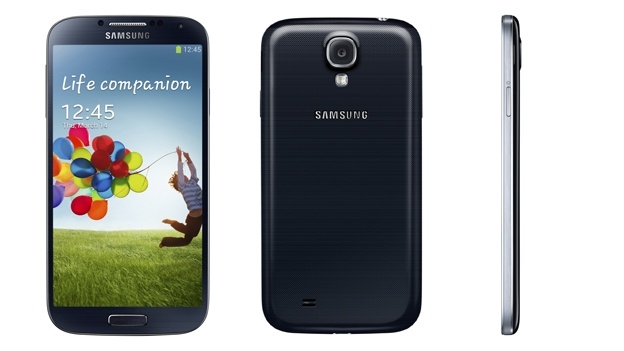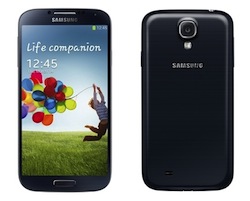Samsung seems to be going the extra mile to differentiate itself from just being yet another Android smartphone, with the launch of its new rival to the iPhone 5, the Samsung Galaxy S4.
In order to do this, it has pumped its latest handset full of features galore, as well as attempting to gain a share in the OTT, content and apps ecosystem pies with multimedia content store Samsung Hub, app market Samsung Apps and Whatsapp challenger Samsung ChatON.
According to Informa Principal Analyst Guillermo Escofet, it’s not enough to just be a device maker these days.
“Handset makers have realised that it’s no longer enough to just build devices, you need to build an eco-system around your brand and creating a developer platform that developers want to hook up to and create apps that work on your devices,” he told Mobile Europe.
“Having innovated rapidly over the last several years to vault itself into top spot in the world smartphone rankings, Samsung now faces essentially the same challenge as Apple: [first], how to continue to improve its devices year on year when existing phones are already top of their class, and there aren’t obvious shortcomings?” said Jan Dawson, chief telecom analyst at Ovum.
“Secondly, how to set Samsung’s devices apart from other devices that share the Android operating system that provides so much of the functionality? As rivals such as HTC and Sony up the specs of their devices and provide ever better hardware, it becomes more and more important for Samsung to differentiate on software and services.”
New features galore
The new Samsung Galaxy S4
Apart from creating a new ecosystem, the Galaxy S4 includes a host of new features aided by built-in sensors that range from enabling users to control the screen with only their eyes (Smart Pause, Smart Scroll); activating commands on the phone via voice control whilst driving (S Voice TM drive); translating text or voice instantly on emails and SMS (S Translator); to previewing email and images as well as interacting with various applications just by hovering your fingers over the screen.
On top of the HD Super AMOLED display with a 441ppi resolution, 13 megapixel rear camera and support for up to six different LTE bands, there are also sensors to detect the user’s surroundings, from temperature, humidity, a pedometer and other new m-health tools.
“The hardware is almost the same as the S3, but in terms of features, it’s very interesting,” says IDC’s Francisco Jeronimo, Research Director, European Mobile Devices.
“What Samsung is trying to do is build a completely new user experience with the phone, which can give them a good differentiation from Apple. The new Galaxy S4 is a very interesting device, and we believe that for the first time, Samsung will be able to outsell the next generation of iPhone and ship more devices than Apple worldwide, unless Apple changes the iPhone and follows the trend with bigger screens.”
Fred Huet, Managing Partner at Greenwich Consulting agrees that the Galaxy S4 now represents the biggest threat to Apple to date.
“The Galaxy S4 boasts a one-inch larger screen size than the iPhone 5 and its eight-core processor and separate eight-core graphics unit make it a vastly more powerful device in comparison to Apple’s latest product.
“Samsung’s latest eye tracking feature will go a long way to establishing Samsung’s image as a serious software player, however, like all innovation, it will be interesting to watch the consumer response. The ‘Smart Stay’ feature on the Galaxy S3 received a mixed response largely due to its inconsistent performance and feature limitations.
“The expected software upgrade certainly holds much promise but in order to really benefit the user it must consistently aid the smartphone experience, or else risk becoming an expensive gimmick.”
According to IDC, Samsung is now the leading handset maker in Europe in both the enterprise and consumer market segments. In 2012, Samsung shipped 11.8 million units and held 41.1 percent of the smartphone enterprise market share. In the consumer device market, Samsung shipped 55.5 million units in Europe, gaining a 44 percent market share.
Apple was in second place, shipping 7.2 million units and holding a 25.4 percent share of the enterprise market, while in the consumer market Apple shipped 21.3 million units in 2012, holding a 17 percent market share.
However, if you look at sales of the individual models, worldwide Apple continues to outsell Samsung’s flagship devices, according to IDC’s Jeronimo.
“Apple has maintained the ability to keep its smartphone prices at a premium [while] Samsung has been sustaining its market share on the mid/low tier smartphones,” he told Mobile Europe.
What about NFC and m-payments?
Just two weeks ago at Mobile World Congress in Barcelona, Samsung championed NFC as a way forward in the future. In the Galaxy S4, Samsung has included a new feature that allows a user to share content with up to eight other devices, but this is as far as it goes.
“The idea of using NFC to pair with other devices is quite compelling and you’re more likely to get mass market usage around this sort of NFC rather than payments,” said Informa’s Escofet.
“This is where the players that are enabling mobile NFC should be focusing their energies more than payments, but you won’t get any direct revenues from it.”
For m-payments, besides the pre-installed Visa payWave applet, Samsung has also added Mobeam’s light-based communications (LBC) technology to the Samsung Galaxy S4.
LBC uses light beams to replicate what a scanner would see when it scans traditional 1-D barcodes. This would enable users to use electronic coupons, loyalty cards and gift cards with barcodes on legacy point-of-sale (POS) payment systems without requiring any architecture upgrades.
“There have always been issues with ordinary 1-D barcodes working well with mobile, such as problems with screen resolution and reflection from the screen, which is why we tend to use QR codes all the time,” says Escofet.
“If it does work the way it’s meant to, it’s a brilliant move by Samsung as it works with legacy POS infrastructure [as opposed to] relying on NFC as it’s not widely deployed.”


